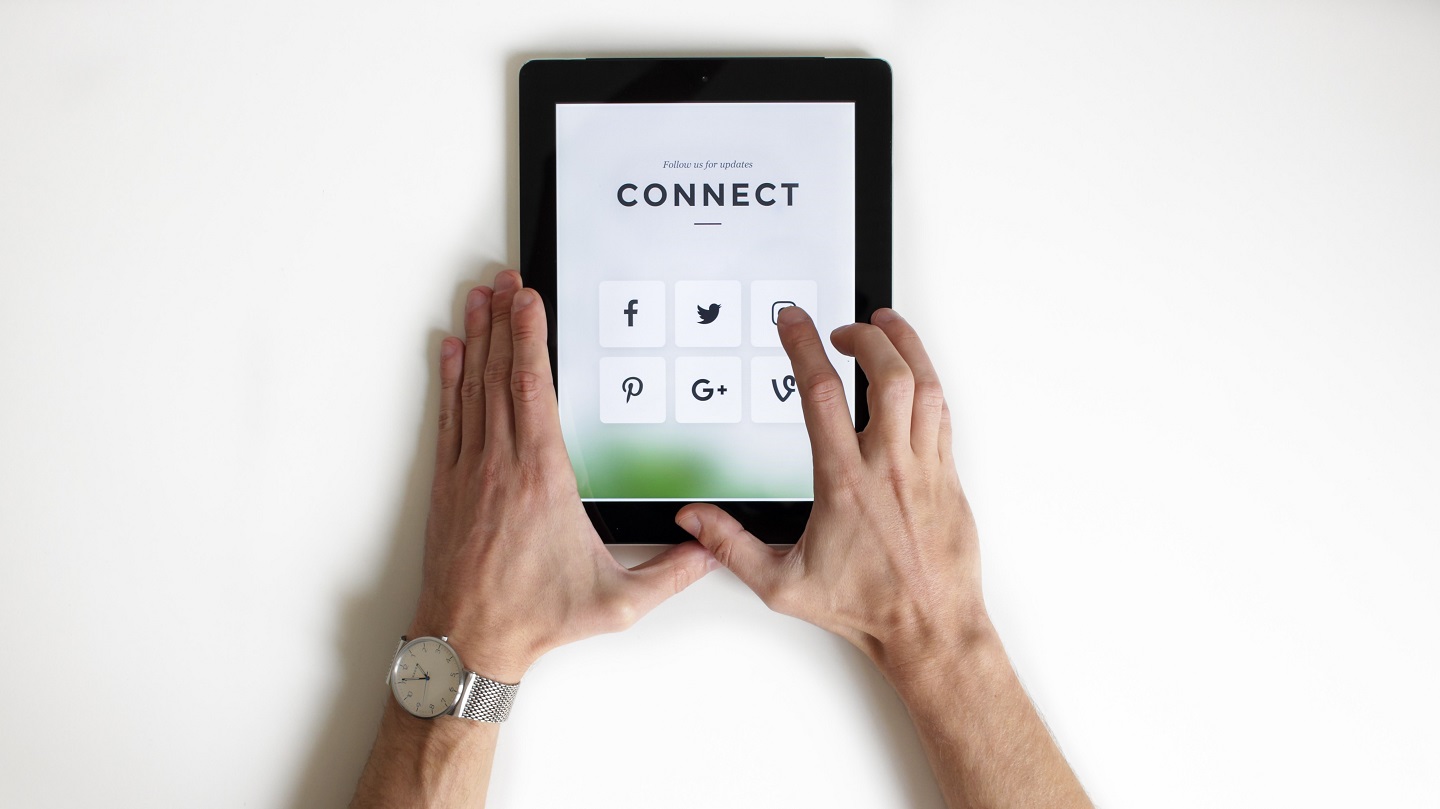The simplest way to describe native mobile advertising is as a type of paid promotion, but a very effective one. However, as a paid advertisement, it is not par your typical paid advertisement and traditional advertising methods. When a platform presents an advertisement as “native” content, it is really just an advertisement disguised as the platform’s own.
It could also be referred to as “original content.” This can be compared to pay-per-click (PPC) ads in Google search engine results pages. It’s odd because, despite the fact that these results are clearly labeled “ad,” they’re grouped in with other “non-ads.”
These advertisements have proven to be extremely profitable for marketers. Many people continue to click on those advertisements and purchase the products they promote. Native mobile advertising formats follow the same rules as other forms of paid promotion, but it is done within the body of an article rather than on a separate page.
To try and simplify this form of advertising we will compare it to the native advertising in magazines, which is usually in the form of an insertion, which is a piece of copy disguised as something else in the publication but is actually an advertisement.
Because of the way it is designed, it is frequently mistaken for actual material in the context of the information it is meant to supplement. If you want to discover all the benefits and wonders of native mobile advertising please, by all means, keep reading the article.
What Is Native Mobile Advertising? Definition
Mobile app native advertising, like desktop native advertising, usually includes sponsored content and some type of advertising message, social network advertisements, and in-feed advertisements.
People use their phones and other mobile devices differently than they do for other forms of mobile advertising, which distinguishes mobile native advertising from other forms of mobile advertising. Mobile devices are an excellent platform for native advertising because they are more frequently used for personal activities than desktop computers.
When compared to traditional banners and banner advertisements on smartphones and tablets, mobile native ads are less noticeable and are seen three times more frequently than banner advertisements on desktop computers. If you want to get your foot in the door with native advertising, you can’t ignore mobile native advertising.
Mobile devices account for slightly more than half of all global web views. Mobile devices are increasingly being used to conduct shop visits and place orders, but also to consume video content and other types of mobile content.
Mobile native advertising, like its desktop counterpart, is intended to blend in with the rest of the page’s content. Advertisements that appear to be native to mobile devices are designed to blend in with the rest of the device’s user interface, giving the impression that they are a part of the device. Advertisers and marketers will benefit greatly as a result of this form of advertisement as it appears more natural to the general eye.
The first is a condition called ad or banner blindness. The majority of the time, your viewers will not even notice your display ads or banner ads. Second, no one enjoys being bothered by advertisements that overtly disrupt their daily routines and activities. They despise them and do not believe in them, which is why they oppose them. According to the most recent data on native advertising, more than 80% of adults in the United States use some form of ad blocking.
CTR (click-through rate) can be up to eight times greater for native ads compared to traditional display ads. That’s because they’re perceived as more trustworthy and engaging by consumers. As with native mobile advertising, this is exactly the case. There’s an additional advantage to this. For marketers, the visibility of their material increases when it appears on reputable and well-known websites.
8 Mobile Native Advertising Examples
In-Feed (Social Network Ad)
Advertising that appears in the feeds of social media users is known as “in-feed social advertising.” If any of the user’s friends or followers have liked it, it’s likely to feature social proof. Mobile native advertisements, like other social material, can be interacted with by users, however, this is dependent on the platform’s capabilities.
Like and share it on Facebook, retweet it on Twitter, or pin it on Pinterest are just a few of the ways they can use native mobile advertising. In-feed social content often includes native video advertising.

In-Feed (Content Disguise Ads)
What kind of mobile advertisements show up in the feed can be presented in a variety of ways. Storytelling, music, games, and other forms of media are examples of this. They are viewed in the same way as the rest of the site’s design, as with other editorial content.
These native mobile advertisements can frequently be found on news websites. This Motley Fool advertisement from Yahoo! Finance appears to be a carbon copy of the news stories that surround it.
In-Feed (Commerce & Business)
In business and commerce, native mobile ads typically appear in the form of promoted products. They’ll include a product description, pricing, and customer reviews, just like other things that appear naturally. If you are someone who shops online, you’re most likely to come across this form of mobile native advertising.
Mapping Native Ads
The distance to a location, the hours of operation, and other details are displayed in in-map advertisements when using a mapping application like Google Maps. This means that more people will be visiting and passing through certain places.
Let’s say that you own a coffee shop in Los Angeles and you want to use Google Maps to your advantage in creating a native or organic ad within. You can pay to make your coffee shop stand out from the rest by placing it first in the search results of an app.
Enter into Shoutem app builder and start creating your app!
In-Game Organic Ads
There’s a good chance that you’re running native ads as a game developer. A properly done native advertisement can be incredibly successful and lucrative. If you haven’t already, then chances are you’re at least thinking about it.
Although there are many reasons why native advertising is the next big thing in mobile advertising, let’s take a look at how you can best implement it in your game (s). Using contextual advertising that is relevant to the game, as a marketing channel provides an engaging experience without the use of third-party data.
Paid Search
Whenever someone conducts an internet search, sponsored search advertising appears above and below the organic search results. The majority of search engines today employ this format, which was pioneered by Google. With organic search results, users may utilize this type of native ad to look up a location on a map or dial a phone number easily since they interact with paid results the same way they do with organic results.
Recommendation Widgets
Recommendation widgets play an important role in content discovery. This tool allows customers to see similar sponsored content after reading or watching an article or video. When it comes to content discovery widgets, they’re just like other mobile native advertising formats in that they’re designed to fit in with the appearance and feel of the websites they’re presented on.
Customized in-App Ads
For native mobile advertising, the Mobile Marketing Association has added a new category. For the first time, marketers are creating their own content custom native ads, such as apps for Android and iOS devices, games, or films, and distributing it directly to customers.
Why is Important To Use Native Mobile Advertising?
Advertisers can communicate with customers in a format that is more comfortable for them thanks to native advertising. When compared to more traditional forms of advertising like banners, native advertising is less intrusive to the user. Ads that are contextually relevant have a high Click-Through Rate (CTR), which can lead to a higher conversion rate and more sales. The merits and disadvantages of each type are detailed in our article on choosing a campaign format.
For advertisers, this style of ad is a terrific way to get innovative exposure, and they can rest assured that their target audience already likes the format. Adverts can leverage features of native advertising to distribute unique, personalized and engaging in-app content, such as push notifications, recommendation or recent-sales widgets and in-feed or in-pp shopping.
Native mobile advertising is frequently more effective than standard advertising. Native advertising, despite the fact that users are aware that the content was paid for, gets more clicks and drives more sales than the obvious standard marketing ad. As a result, this content can be viewed in a way that is organic and familiar to a user’s normal media consumption.
8 Advantages of Native Mobile Advertising
- Customized branded content
- Interesting and engaging content gets more engagement
- Native display ads receive a higher click-through-rate (CTR) than typical display ads
- Quickly grabs your audience’s attention
- Drives better campaign performances
- Fully optimizes targeting capabilities
- Builds trust among your customers
- Creates laser-targeted content for a specific group, audience or generation
Enter into Shoutem app builder and start creating your app!

What Does Market Statistics Say On Native Mobile Advertising?
Because of the sheer volume of static and interactive advertising formats available, native mobile app formats constitute the vast majority of ad forms that mobile consumers will find both visually appealing and useful. The data above show that native advertising is the future of mobile advertising. Digital advertising will largely be relegated to native and in-app formats by the year 2020.
Here’s why:
- Useful and non-intrusive. Users who are on the lookout for information are given an added benefit in the shape of native advertising. There are no distractions from other in-app activities, and it improves user trust because the product is not pushed for immediate purchase. As a result, their engagement indexes reach 20–60% above average. (as described by smartyads.com)
- The latest native advertising statistics show that, in the US alone, 80% of adults use at least one method for blocking ads. They are able to evade adblocking software. Ad blockers won’t notice a native ad because it provides useful information to the consumer.
- They address the issue of banner apathy. Banner advertisements are being ignored more frequently than ever before, yet native ads are being viewed three times more frequently and shared more frequently than any other type of ad.
- EMarketer estimates that in 2017, $19.50 billion was spent on native ads on mobile devices, accounting for 88.3% of all native ad spending.
- When it comes to native ads for mobile sold programmatically, they represented 84% of native ad spend which equals $18.55 billion.
Frequently Asked Questions About Native Mobile Advertising
What is mobile native in Facebook ads?
As we already explained in the previous text the term “native advertisement” refers to an ad that is seamlessly integrated into your app’s visual design. Ads that appear like they’re part of your interface are more likely to get people’s attention and generate higher effective CPMs. It is incredibly important to make sure your ad doesn’t look like an experience on your app in order to get people to engage with it.
A Facebook native add, in addition to descriptive text, visuals, and a clickthrough URL or action, an ad also includes other metadata. An advertisement’s many components are sent to your app using the Meta API.
Why do advertisers choose native mobile advertising?
Native advertising’s success can be linked to the fact that it is well-received by its targeted audience. Ad fatigue can be alleviated by employing this strategy. As a result, individuals are more likely to view and absorb their material because they don’t feel like adverts.
As individuals are bombarded with marketing ads throughout the day, a visual ad might be easily overlooked in traditional advertising. When it comes to native advertising, firms have a better chance of getting their message in front of the right people.
As online marketers, we’re increasingly seeing brands turn to content marketing and/or native advertising to spread their marketing messages in the ever-changing digital landscape. Due to their direct connection to the target population, this is why.




